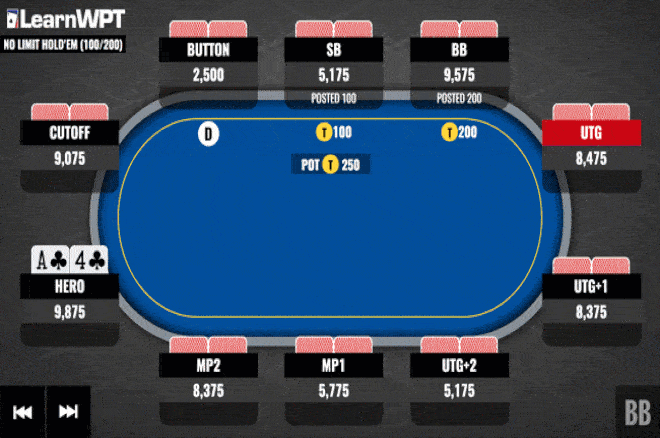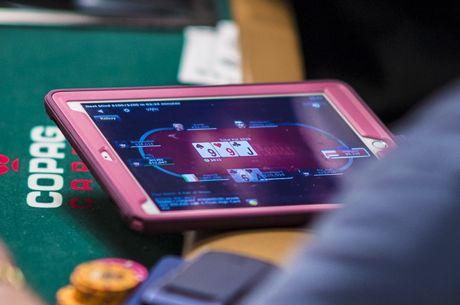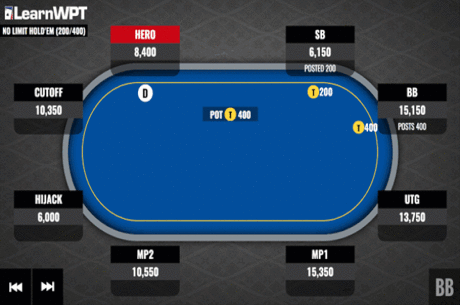What Do You Do Here? Top Pair vs. an All-In on a Paired Board

DECISION POINT: In a tournament, a player in middle position limps and you call as well from the hijack seat with A?4?. The button calls, the small blind folds, and the big blind checks. The flop comes A?10?10?. It checks to you and you check as well, then the button moves all in. The big blind and middle-position player both fold. The action is on you...
PRO ANSWER: In this hand, we called preflop in a limped pot with a small suited ace and flopped an ace on a paired board. After checking the flop, the short-stacked player on the button moves all in for around twice the size of the pot.
When deciding whether or not to call, we should estimate the range of hands with which our opponent would take this action.
The range of hands with which the button is value betting consists of trips or at worst another ace. Against an ace we are often losing and sometimes chopping. We do not beat any hands in our opponent's value range.
The question then becomes whether there are enough bluffs in the button's range to make calling profitable. Most opponents do not make pure bluffs into three opponents for their tournament life. If we have some historical information that this specific opponent makes bluffs in spots like this, then perhaps we could consider calling.
However, as a default, we should give overbets of the pot into multiple opponents credit for being value bets much more often than bluffs.
Since we do not beat any of our opponent's value range, folding is the best play.
LearnWPT is a poker training site dedicated to transforming the poker games of rank beginners, skilled amateurs, and aspiring professionals. Offering both Live Workshops and Online Training, is a one-stop shop for poker education, designed to provide all the tools a player needs to become a winner. Visit LearnWPT.com today and get 2 Free Strategy Episodes that will immediately impact how you play. LearnWPT.com - Think Like a Pro!









